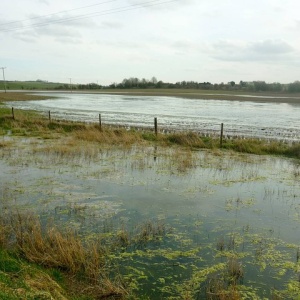
This paper uses data from 1961 to 2010 to assess the effects that extreme weather events had on nutrient supplies (micronutrients, macronutrients and fibre) in different countries. Extreme weather generally had a small but negative impact on nutrient availability. The effects were more pronounced in both land-locked developing countries and in low-income food deficit countries, with nutrient supply decreasing by between 1% and 8%.
The extreme weather events considered in this study were floods, droughts, extreme heat events, extreme cold events, and storms. The analysis used the following country categories as defined by FAOSTAT: landlocked developing countries, least developed countries, low-income food deficit countries, and net food-importing developing countries, as well as considering the group of all countries and the European Union.
The figure below shows how a selection of micronutrient supplies were affected in the time surrounding the extreme weather events (view Figure 3 of the full paper for all micronutrients and fibre supply). As shown, landlocked developing countries are particularly badly affected for some micronutrients, which the authors suggest could be due to a lack of access to trade through ocean ports and also because landlocked countries tend to have less arable or irrigated farmland than coastal countries.

Abstract
Background
To date, the effects of extreme weather events on nutrient supply within the population have not been quantified. In this study, we investigated micronutrient, macronutrient, and fibre supply changes during 175 extreme weather events within 87 countries in the year that a major extreme weather event occurred, with a targeted focus on low-income settings.
Methods
We collected data from the International Disasters Database and the Global Expanded Nutrient Supply model for the period 1961–2010, and applied superposed epoch analysis to calculate the percentage change in nutrient supply during the year of an extreme weather event relative to its historical context. We composited globally and by subgroup (EU, landlocked developing countries, least developed countries, low-income food deficit countries, and net food-importing developing countries). Lastly, we reported nutrient supply changes in terms of recommended dietary allowance for children aged 1–3 years.
Findings
Globally, all micronutrient supplies had a modest negative percentage change during the year of an extreme weather event; of these effects, those that reached an α=0·05 significance level included calcium, folate, thiamin, vitamin B6, and vitamin C, with nutrient supply changes ranging from −0·40 to −1·73% of the average supply. The effect of an extreme weather event was especially magnified among landlocked developing countries and low-income food deficit countries, with significant nutrient supply changes ranging from −1·61 to −7·57% of the average supply. Furthermore, the observed nutrient supply deficits in landlocked developing countries constituted a large percentage (ranging from 1·95 to 39·19%) of what a healthy child's sufficient average dietary intake should be.
Interpretation
The global effects of extreme weather events on nutrient supply found in this study are modest in isolation; however, in the context of nutrient needs for healthy child development in low-income settings, the effects observed are substantial.
Reference
Park, C.S., Vogel, E., Larson, L.M., Myers, S.S., Daniel, M. and Biggs, B.A., 2019. The global effect of extreme weather events on nutrient supply: a superposed epoch analysis. The Lancet Planetary Health, 3(10), pp.e429-e438.
Read the full paper here. See also the Foodsource building block What is food security?







Post a new comment »